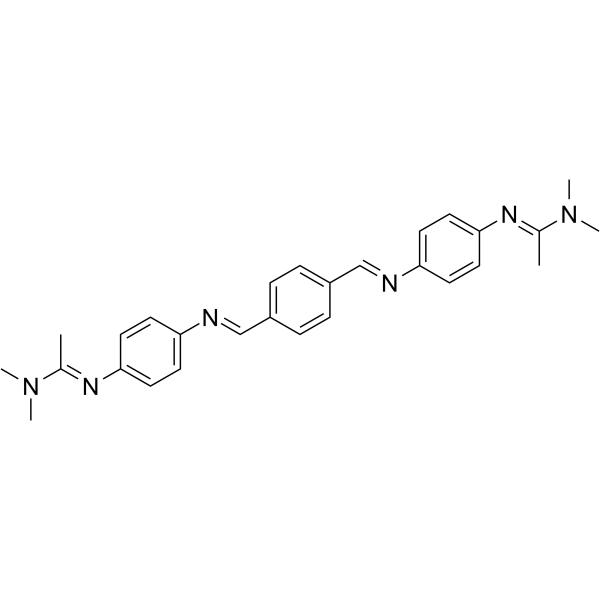| Description |
Tribendimidine is an orally active, broad-spectrum anthelmintic agent, with particularly high activity against A. lumbricoides and N. americanus. Tribendimidine is also an L-type nicotinic acetylcholine receptor (nAChR) agonist[1][2][3].
|
| Related Catalog |
|
| In Vitro |
Tribendimidine (100 μg/mL, 24 h) shows intoxication of C. elegans[3]. Tribendimidine (0-100 μg/mL, 6 days) shows toxicity with an LC50 value (concentration at which half the animals are dead) of 54.4 μg/mL[3]. Tribendimidine (0-200 μg/mL, 64 h)-induced sterility is resisted by trb mutant hermaphrodites, and Levamisole-resistant mutants are resistant to Tribendimidine. [3].
|
| In Vivo |
Tribendimidine (75 and 150 mg/kg; p.o.; once) shows inhibition activity against C. sinensis in rats, and shows inhibition against O. viverrini at 400 mg/kg in hamsters[2]. Animal Model: C. sinensis infected Female Wistar rats[2] Dosage: 75 mg/kg and 150 mg/kg Administration: Oral administration, once Result: A 99.1% worm burden reduction was achieved at 150 mg/kg, and the worm burden reduction was still significant (68.9%) at 75 mg/kg.
|
| References |
[1]. Xiao SH, et al. Tribendimidine: a promising, safe and broad-spectrum anthelmintic agent from China. Acta Trop. 2005 Apr;94(1):1-14. [2]. Keiser J, et al. Evaluation of the in vivo activity of tribendimidine against Schistosoma mansoni, Fasciola hepatica, Clonorchis sinensis, and Opisthorchis viverrini. Antimicrob Agents Chemother. 2007 Mar;51(3):1096-8. [3]. Hu Y, et al. The new anthelmintic tribendimidine is an L-type (levamisole and pyrantel) nicotinic acetylcholine receptor agonist. PLoS Negl Trop Dis. 2009 Aug 11;3(8):e499.
|
